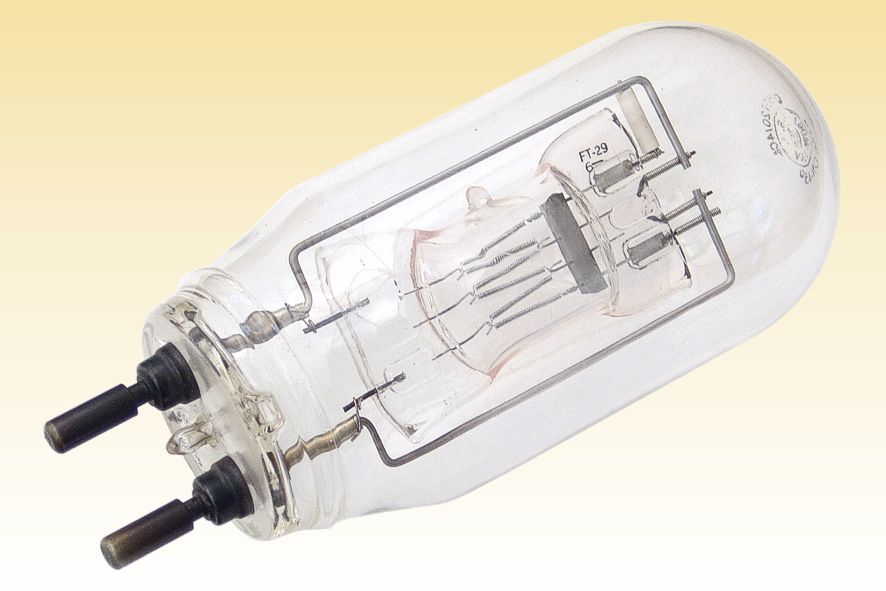
|
1st Generation Planar Filament - Q750T20/4CL |

In March 1966 GE's engineers made a breakthrough by launching this Q750T20/4CL lamp, the first halogen source to feature a planar filament. It was intended to replace the earlier 750T24 studio spotlight lamps, types DVH and EDG, with which it is both physically and electrically interchangeable but offers four times the life, 4.5 times the lumen-hours, plus constant output and colour temperature.
This lamp pre-dates the advent of single ended capsules - note the unusual double ended quartz inner capsule. This has been sealed into the bulb of a conventional medium bi-post lamp to achieve the necessary physical compatibility. Because these compact filament arrays are liable to heavy arcing at end of life, a fuse is enclosed in the ceramic tube at the top of the outer jacket. This unusual lamp was produced for only a few years before being superseded by the type EGR, which dispensed with the former double jacket design by employing a single ended quartz capsule cemented directly into an extended ceramic base.




| Manufacturer: | General Electric Co. USA | |
| Lamp Power: | 750 Watts | |
| Lamp Voltage: | 120 Volts | |
| Lamp Current: | 6.25 Amperes | |
| Cap Type: | G22 Glass | Medium Bi-post |
| Bulb Type: | T-63.5 | T-20 in eighths/inch |
| Bulb Finish: | Clear | Borosilicate Glass |
| Filament Type: | C-13 | Planar Grid |
| Atmosphere: | Bromine cycle | Argon-15% Nitrogen |
| Luminous Flux: | 21,000 lm | |
| Luminous Efficacy: | 28.0 lm/W | |
| Peak Intensity: | N/A | |
| Beam Distribution: | N/A | |
| Colour Temperature & CRI: | CCT: 3200K | CRI: Ra 100 |
| Chromaticity Co-ordinates: | CCx: 0.423 | CCy: 0.399 |
| Rated Lifetime: | 200 hours | to 50% survival |
| Burning Position: | Base Down ± 45° | |
| Overall Length: | 165 mm | 6½ inches |
| Light Centre Length: | 63.5 mm | 2½ inches |
| Factory: | Inner: Cuyahoga NELA, USA | Outer: Mattoon, IL, USA |
| Date of Manufacture: | May 1966 | Date Code 29- |
| Original / Present Value: | Unknown | Unknown |

